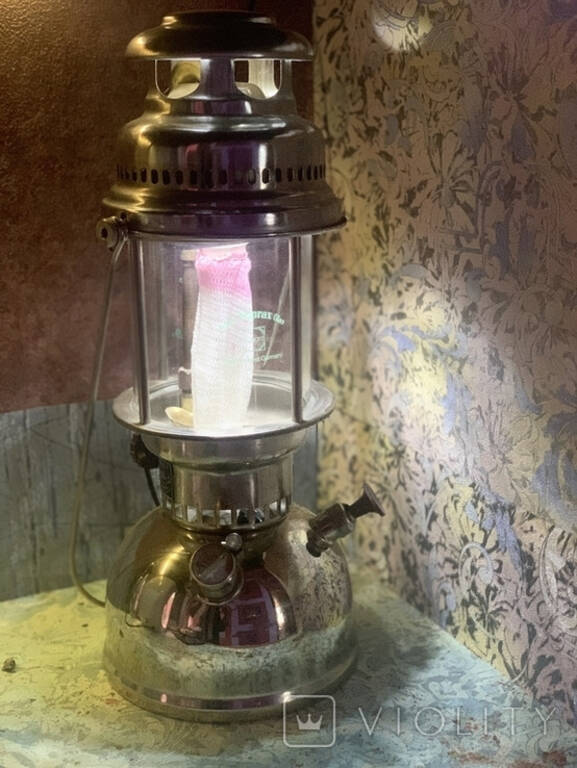
In 1853, two Austrian pharmacists, Ignatius Lukasiewicz and Jan Zech, made an important breakthrough in the history of lighting in Lviv by inventing the first kerosene lamps. They modified an ordinary oil lamp by adding kerosene to it, which significantly improved the quality and brightness of the light.

photo-lviv.in.ua
Before the advent of kerosene lamps, indoor lighting was rather impractical and inefficient. Oil lamps, which have been used for centuries, have had their limitations. They created a cloudy and dim light, and were also dangerous due to the high temperature and flammability of the oil.

Kerosene lamp, work of Auguste Moreau, late 19th century, bronze.

Optimus 550/500 CP

The first half of 20th century.
With the first successful prototype of a kerosene lamp, Lukasiewicz and Zech began to refine their invention. They have been working on improving the design of the lamp to make it safer and more comfortable to use. Soon kerosene lamps began to gain recognition and popularity in many European cities.

etsy.com
However, when we talk about the history of kerosene lamps, one cannot fail to mention the Feuerhand Super Baby 175, which has become one of the most famous representatives of this type of lighting. Feuerhand, a German company specializing in the manufacture of lamps and lanterns, released the Super Baby 175 in 1934.

The Feuerhand Super Baby 175 was a compact, portable and reliable light source. Equipped with a pre-heating mechanism and a special catalyst, this lamp was handy for outdoor use, camping or hiking. It has become popular with both adventure seekers and power-poor workers alike.

The Feuerhand Super Baby 175 remained in production after World War II, despite the rise in popularity of electricity and other light sources. Many people still collect and value these lamps as a historical artifact, testifying to the period when kerosene lamps were an integral part of our lives.

https://atelier-bazelman.nl
The history of kerosene lamps shows the importance of innovation in lighting. From the humble beginnings of Lukasiewicz and Zech in 1853 to the popularity of the Feuerhand Super Baby 175 in 1934, these lamps paved the way for the modern lights we use today.
Kerosene lamps have become a symbol of progress and enlightenment, and their history reminds us of how small changes can lead to big technological breakthroughs.
